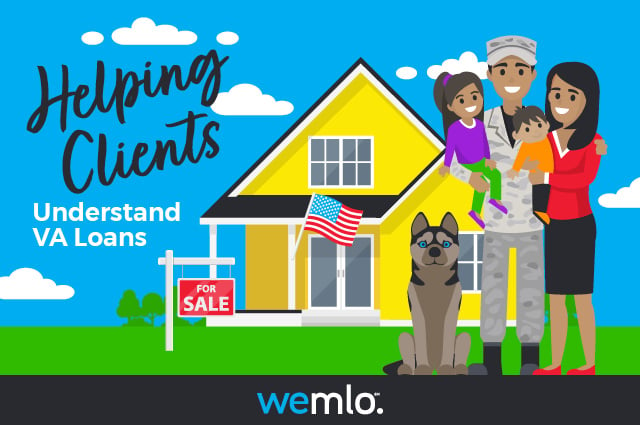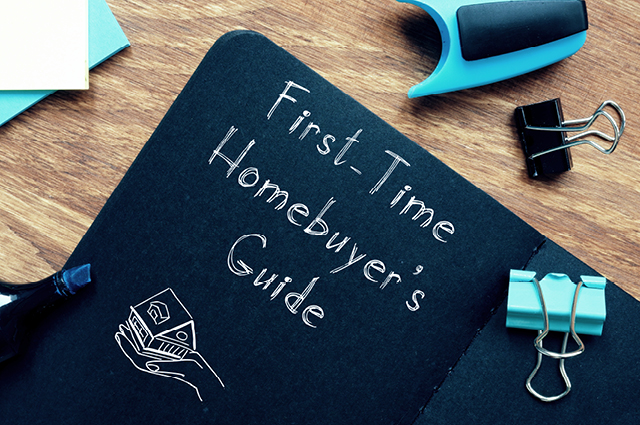Discover how the latest technology revolution could change the mortgage industry.
As a mortgage professional, you’ve probably encountered your fair share of clients interested in VA loans. After all, VA loans are a very popular option for eligible borrowers. However, explaining the nitty -gritty of VA loans can be tricky given how unique the loan product is. So we (with a lot of help from the U.S. Department of Veterans Affairs) created a high-level information guide to get you started on your understanding of this very popular, intricate loan option.
How VA Loans Work
VA loans fall into two categories: VA direct and VA-backed. With a VA direct loan, the U.S. Department of Veteran Affairs is the mortgage lender.
With a VA-backed home loan, borrowers use private lenders, but the U.S. Department of Veteran Affairs guarantees a portion of the loan. That means there’s less risk for the lender and the borrower may get better terms as a result.
There are four main VA loan types that borrowers may qualify for:
-
Purchase loan: A VA-backed purchase loan may offer better terms than a loan from a private lender.
-
Cash-out refinance loan: A VA-backed cash-out refinance loan allows borrowers to cash out the equity in their home in exchange for a new home loan with different terms (that is also usually larger than their current loan).
-
Interest Rate Reduction Refinance Loan (IRRRL): For homeowners who already have a VA loan, this allows the borrower to replace the current loan with a new one with different terms (i.e., to take advantage of a lower interest rate or move from a loan with an adjustable or variable interest rate to a fixed rate).
-
Native American Direct Loan (NADL) program: This program is for veterans who are Native American or their spouse is a Native American and offers a loan to buy, build, or make improvements to a home on federal trust land.
Most VA loans do not require a down payment or private mortgage insurance (PMI). Borrowers usually do not have to pay for extra costs such as processing fees, pest inspections, and real estate broker/buyer fees. Origination (lender) or appraisal fees are sometimes waived but are often limited or paid at closing instead of upfront.
VA Loan Borrower Education
Like any mortgage option, educating borrowers on the ins and outs of VA loans is essential. Some borrowers may not realize that there are potential downsides to VA loan options. That’s why having a few key talking points in your back-pocket can be useful.
VA Loan Talking Points:
-
A Funding Fee is paid by the qualified borrower since the VA home loan program doesn’t require down payments or monthly mortgage insurance. This one-time charge allows the VA to offer advantages to its’ service members, veterans, and their families.
-
A Certificate of Eligibility (COE) is the documentation required for a VA loan. Borrowers do not need to have their COE to start the home loan process and can obtain this documentation in numerous ways, including their eBenefits portal.
-
Not all types of property qualify for a VA loan. Lenders will be able to give insight into each borrower’s unique situation, but most condominiums, manufactured homes, modular homes, and new construction homes are approved while vacant land and co-ops are not.
-
No one is guaranteed a VA loan, even with VA entitlement. To determine their eligibility, borrowers should check the minimum service requirements and the borrower will still need to qualify for the loan.
-
Borrowers without a down payment may spend more over the life of the loan. Simply put, the lack of down payment will be rolled into the mortgage loan and interest will be charged.
VA Loan Eligibility
Veterans, service members, and their surviving spouses may be eligible for a VA loan to buy, build, improve, or refinance a home. Potential borrowers will still need to meet credit and income requirements and eligibility varies based on service history, duty status, character of service and discharge, and possibly other factors as well.
The Difference Between a VA Loan and Conventional Loan
A VA loan is either directly funded by or backed by the U.S. Department of Veteran Affairs. A conventional loan is not made by any government agency. It’s the most common loan type and is funded by a private lender. The lender assumes the risk if the borrower defaults, so a conventional loan may require private mortgage insurance if the borrower doesn’t put at least 20% down. Because VA loans are backed by a government agency, the risk of a borrower defaulting on their payments is significantly lower for the lender.
VA Loan Funding Fee
There are exceptions, but for the most part, the VA funding fee is a one-time payment on a VA-backed or VA direct home loan. The funding fee is a percentage of the total loan amount and the cost varies based on the type and total of the loan. It can be paid as one lump sum or added to the loan balance and financed.
Looking for the latest mortgage news, tips, and updates? Sign up for the wemlo Weekly newsletter where the #teamlo provides everything you need to know all in one place .



